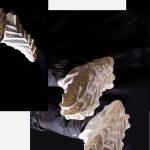Machine Learning Tests Abilities of Rare Earth Phosphates at Atmospheric Extremes
- Details
- Category: tungsten‘s News
- Published on Thursday, 07 October 2021 11:08
Researchers at Rensselaer Polytechnic Institute used machine learning to test the ability of rare earth phosphates in extreme atmospheric conditions. They used machine learning to examine the combination of various elements that usually applied for protection in aerospace Environmental barrier coating required for equipment under extreme conditions of and space environment. The project is led by researchers from Rensselaer Polytechnic Institute and supported by the National Science Foundation.
Environmental barrier coatings, or EBC, are used to seal engines and structural components of rockets, hypersonic jets, and other space vehicles. These coatings can protect components from harsh operating conditions, such as high temperature, supersonic speed, intense pressure, and severe oxidation and corrosion. Rare earth silicates are currently a powerful choice for the EBC used to coat the silicon carbide-based ceramic matrix materials in the most advanced jet engines, but these materials have defects and may exhibit performance degradation.
The Rensselaer team proposed replacing silicate with multi-component rare earth phosphate to make EBC as an alternative.
Professor Jie Lian of the Department of Mechanical, Aerospace and Nuclear Engineering and the main researcher of the fund said: "In order to design next-generation EBCs with transformative properties, we need new concepts and innovations, and multi-component rare earth phosphates are designed for the future. The EBC and the expansion of its performance offer unlimited possibilities".

The US$1.8 million National Science Foundation grant aims to achieve data-driven material design and discovery through collaborative high-throughput computing-experimentation and machine learning, thereby revolutionizing material design and supporting method development. Researchers will use advanced computer algorithms to create a combination of elements in multiple configurations to determine the most favorable framework for the high-performance EBC required for future aerospace and space transportation systems.
Liping Huang, professor and co-lead researcher of the Department of Materials Science and Engineering, said: “The empirical trial and error method is too expensive and will soon become impractical in a large design space. Our goal is to adopt a novel The method combines physics-based modeling with machine learning to predict the best composition and microstructure of the next-generation EBCs."
Lian, an expert in material behavior in experiments and extreme environments, and Huang, an expert in high-throughput atomic simulation, are joined in this four-year research project by Suvranu De, an expert in finite element analysis and director of the Center for Modeling, Simulation, and Imaging in Medicine (CeMSIM) at Rensselaer, and Lucy Zhang, an expert in machine learning and a professor in the Department of Mechanical, Aerospace, and Nuclear Engineering.
Zhang said: “A machine learning model trained on data generated by high-throughput multi-scale simulations can speed up the design and optimization of the structure and performance of multi-component rare earth phosphates as EBC. The Rensselaer team will work with researchers at the General Electric Global Research, a leading industry of EBCs."
Rensselaer Polytechnic Institute was established in 1824 and was the first technical research university in the United States. Rensselaer includes five schools, 32 research centers, more than 145 academic programs, and a dynamic community composed of more than 7,600 students and more than 100,000 living alumni.
- < Prev
- Next >
Link to this article:Machine Learning Tests Abilities of Rare Earth Phosphates at Atmospheric Extremes
Reprint Statement: If there are no special instructions, all articles on this site are original. Please indicate the source for reprinting:Tungusten,Thanks!^^

